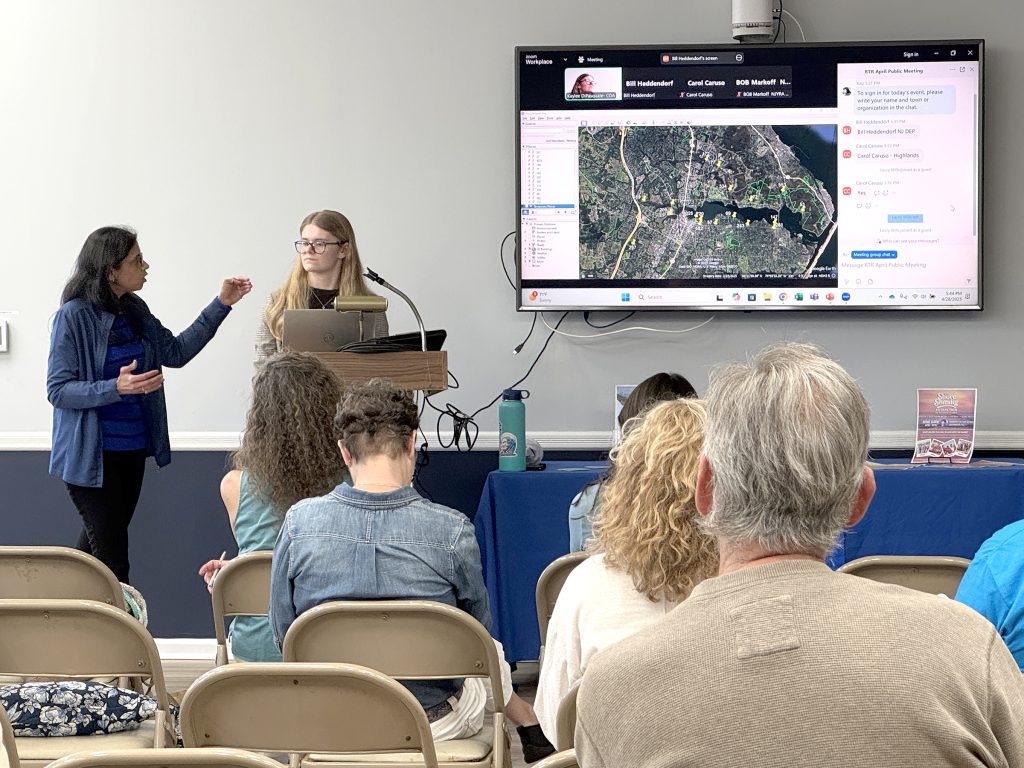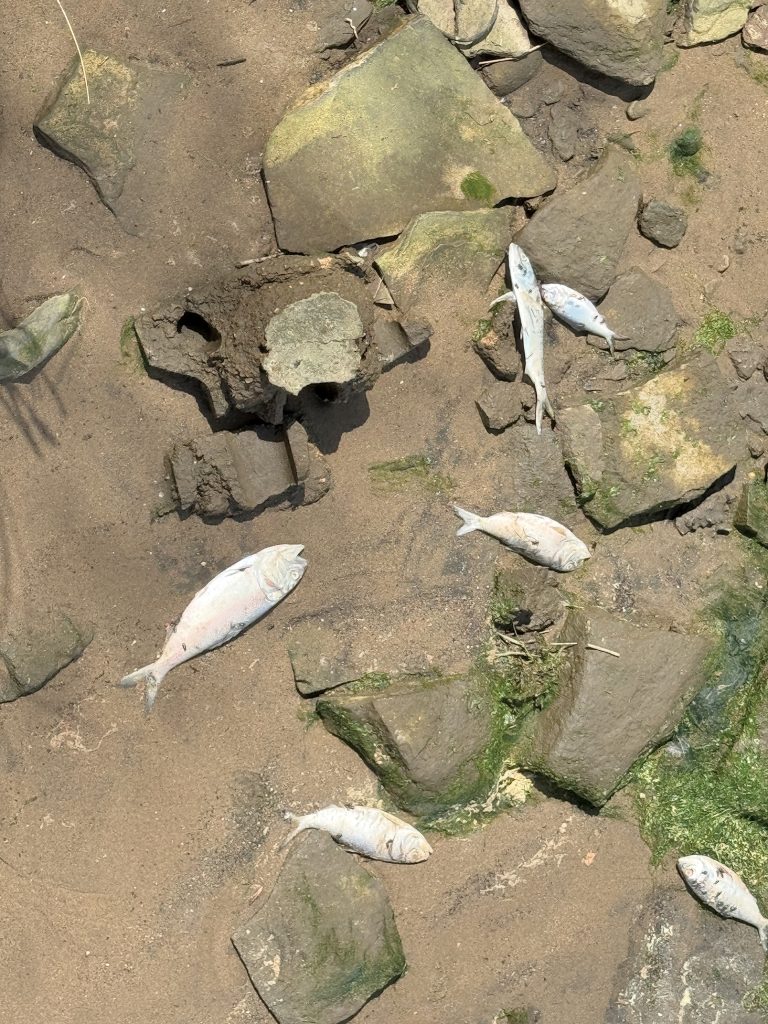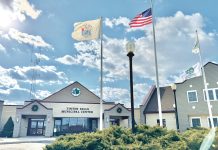
By Sunayana Prabhu
LITTLE SILVER – In a pattern both state and community scientists have noted every summer, area waterways are exceeding thresholds in bacteria levels, particularly fecal coliform in the Navesink River.
At a public meeting of the Rally for the Two Rivers (RTR) in late April, scientists from Clean Ocean Action (COA) revealed elevated concentrations of enterococcus bacteria in water samples from certain parts of the Shrewsbury River. In addition, elevated fecal coliform bacteria were recorded by water monitoring officials from the New Jersey Department of Environmental Protection (NJDEP) in parts of the Navesink River.
At the annual meeting organized by COA at the Little Silver Women’s Club, the Long Branch-based nonprofit provided data on the water quality monitoring done by its volunteers in collaboration with the NJDEP across the Two River area watershed.
Despite being state-designated No Discharge Zones, both the Navesink and Shrewsbury rivers continue to suffer from annual spikes in pathogen contamination, often peaking in the warmer months.
Pathogen Pollution update
Pathogens are disease-causing parasites such as viruses, bacteria, fungi and other species.
Both rivers are monitored for enterococcus bacteria, which are considered the primary indicator of fecal material in marine waters.
In terms of the enterococcus bacteria, “a 100-milliliter water sample cannot exceed 104 CFU,” explained Swarna Muthukrishnan, Ph.D., COA’s water quality research director. However, as COA’s bi-weekly water monitoring efforts have revealed, most of the Shrewsbury watershed exceeded those numbers.
Meanwhile, fecal coliform levels in the Navesink by Marine Park outfall reached 11,000 CFU in April, according to the data presented by Bill Heddendorf, an official with the NJDEP’s Bureau of Marine Water Monitoring program.
For context, “a safe number for swimming, I believe, is at 240 (CFU),” Heddendorf said, which is “typically tenfold” for secondary recreation like boating. “Secondary recreation, you’re looking at around 2,000 (CFU).”
COA has established 21 water monitoring sites in the Navesink watershed alone and about 15 sites in the Shrewsbury watershed, with an additional site located in McClees Creek.
The data presented during the RTR meeting are a summary of bacteria monitoring results from 27 bi-weekly sampling events completed between October 2023 and October 2024 in the Shrewsbury watershed. Muthukrishnan also noted that the Shrewsbury River is not designated for primary recreational uses or swimming purposes. Yet, she noted, “more than 50% of the sites had exceedances” in bacterial contamination between 2023 and 2024, “which is concerning,” she said.
Water quality from at least 10 sites, including all the tributaries of the Shrewsbury River, routinely exceeded the safe water threshold, showing bacterial spikes as high as 70%.
The numbers observed were far beyond the threshold of 104, with enterococcus levels as high as 13,000 MPN (Most Probable Number) per 100 milliliters in the Shrewsbury area watershed, including McClees Creek.
Heddendorf noted that harmful bacterial spikes occur almost annually in the Navesink River watershed, triggering mass fish-kill events and growing environmental health concerns.
“The time frame from June until October is typically when we see the higher levels,” throughout the Navesink watershed, said Heddendorf.
The Role and Goal of RTR
COA’s first water quality monitoring began with the Rally for the Navesink in 2016 and relaunched in 2023 with the NJDEP as Rally for Two Rivers to include the Shrewsbury River. However, the Navesink continues to be a primary focus for COA and the NJDEP due to the severity of pathogen pollution.
In 2016, levels of contamination resulted in the downgrade of about 565 acres of shellfishing habitat. Human waste-sniffing dogs were used at the time by COA to track sources of fecal contamination.
The water quality monitoring program closed abruptly during the COVID-19 pandemic. When it resumed in 2023, scientists found a dramatic surge in fecal coliform bacteria in the Navesink with “literally raw sewage” flowing in the river near Marine Park, said Heddendorf. The Spring Street stormwater outfall into the Navesink showed “really high” concentrations of fecal coliform at 800,000 MPN.
The elevated levels were traced to a blockage in the sanitary infrastructure, which was later fixed by Red Bank Public Works officials in collaboration with COA and the NJDEP. According to Heddendorf, this intervention initially improved water quality, with data looking promising for three to four months.
However, by early 2024, elevated bacteria levels returned, appearing almost every other week. This year again, Heddendorf said, “everything was looking really good for three or four months at the beginning of the year, and then we started seeing high levels again” in the Navesink, detecting almost 11,000 MPN in the April 15 lab reports.
The NJDEP has been doing an antibiotic resistance analysis in the Navesink watershed to determine whether the fecal coliform colonies are from humans or domesticated animals. Typically, Heddendorf said, “Marine Park, the Spring Street outfall, we see a lot of the human signatures and then more to the west and upstream at McCleese Creek, we see more domesticated animals as being the culprit there.”
Despite efforts, the recurrence of patho- gens in the area’s waterways is consistent. NJDEP investigations suggest a range of factors contribute to the pollution, including aging sewage infrastructure, illegal boat waste discharge, domestic pet waste, and upstream wildlife runoff.
Monitoring Efforts Ramp Up
COA’s program takes a “find it, fix it, no blame” collaborative approach by involving community stakeholders, including volunteers, elected officials and community scientists, to identify and remediate pollution sources. The nonprofit will be hosting the Rally for the Two Rivers Eco-Fest, June 7 at Victory Park in Rumson to bolster community awareness about achieving healthy waterways.
Additionally, Heddendorf said the NJDEP is planning to place monitoring buoys in the Navesink next year to provide oxygen and salinity level data and track the water quality in real time before another fish-kill event strikes.
The past few years, thousands of menhaden – also known as bunker – have washed up dead on the rivers’ shores. A large fish kill in 2023 was linked to a virus in the water. This year, NJDEP scientists observed a decomposing phytoplankton algal bloom around mid-April that triggered low oxygen levels, pushing a wave of dead menhaden ashore.
State and community authorities continue to urge public cooperation: Use boat pump-out services, secure valves on boats, manage pet waste responsibly, and minimize runoff from fertilizers and road salts.
Some of the residents at the public meeting raised concerns ranging from the role of increased beach traffic to illegal dumping from construction sites and recreational boats. NJDEP officials inspect for tampered or unsecured valves – devices that prevent onboard waste discharge.
But residents remain worried. Tinton Falls resident Ellen Goldberg asked whether the influx of beachgoers in summer affects the levels.
“That definitely influences the level of fecal coliform,” Heddendorf replied.
“There are folks following through with testing, trying to find sources of pollution and to put an end to it – hopefully at some point,” said Little Silver Mayor Bob Neff. Some of the findings were “disturbing,” Neff said. “I’ve been swimming in these waters for 45 years… you couldn’t see your toes when you were in five inches of water, and now you can. That’s a huge difference.”
The article originally appeared in the May 15 – 21, 2025 print edition of The Two River Times.















